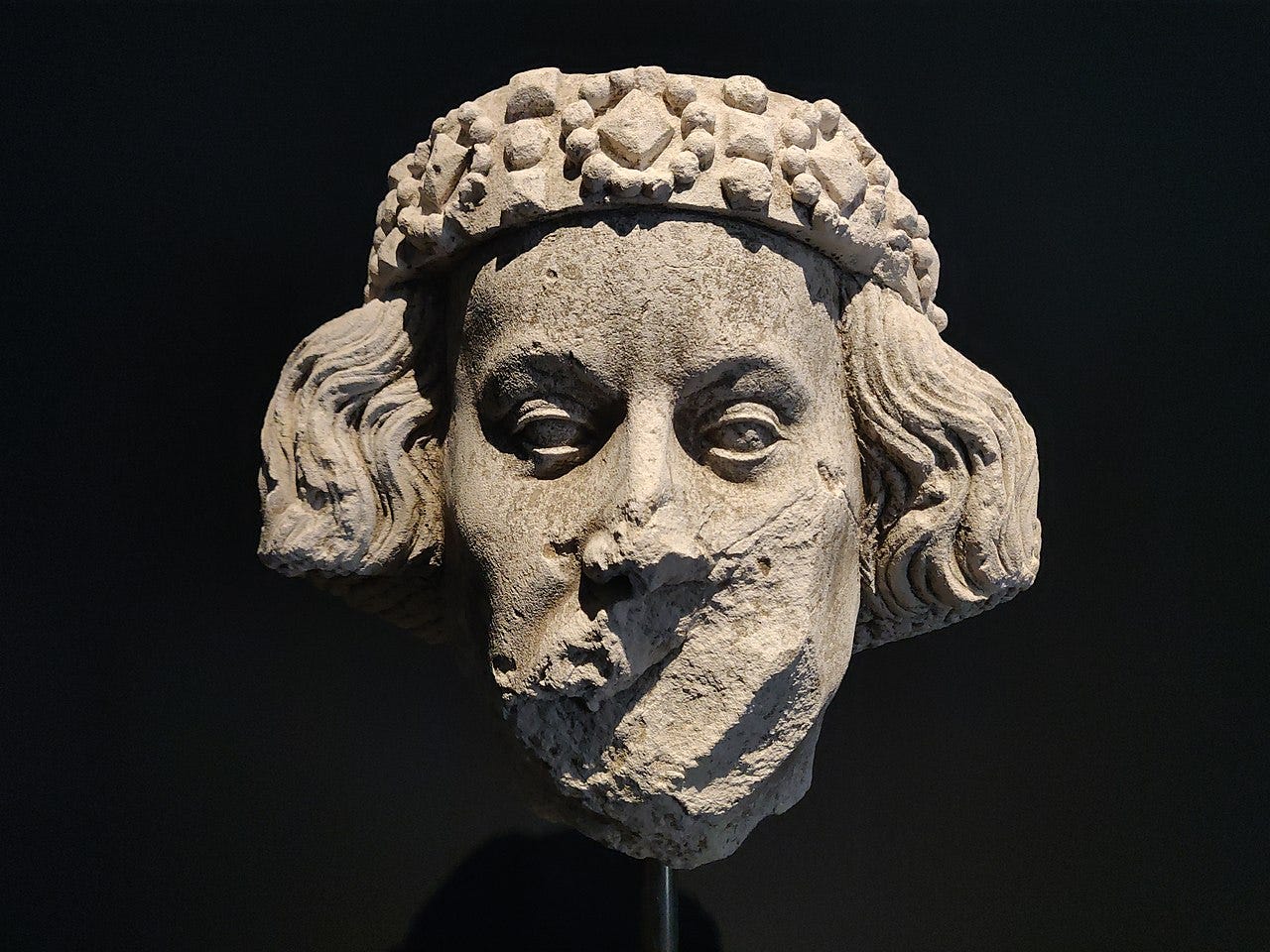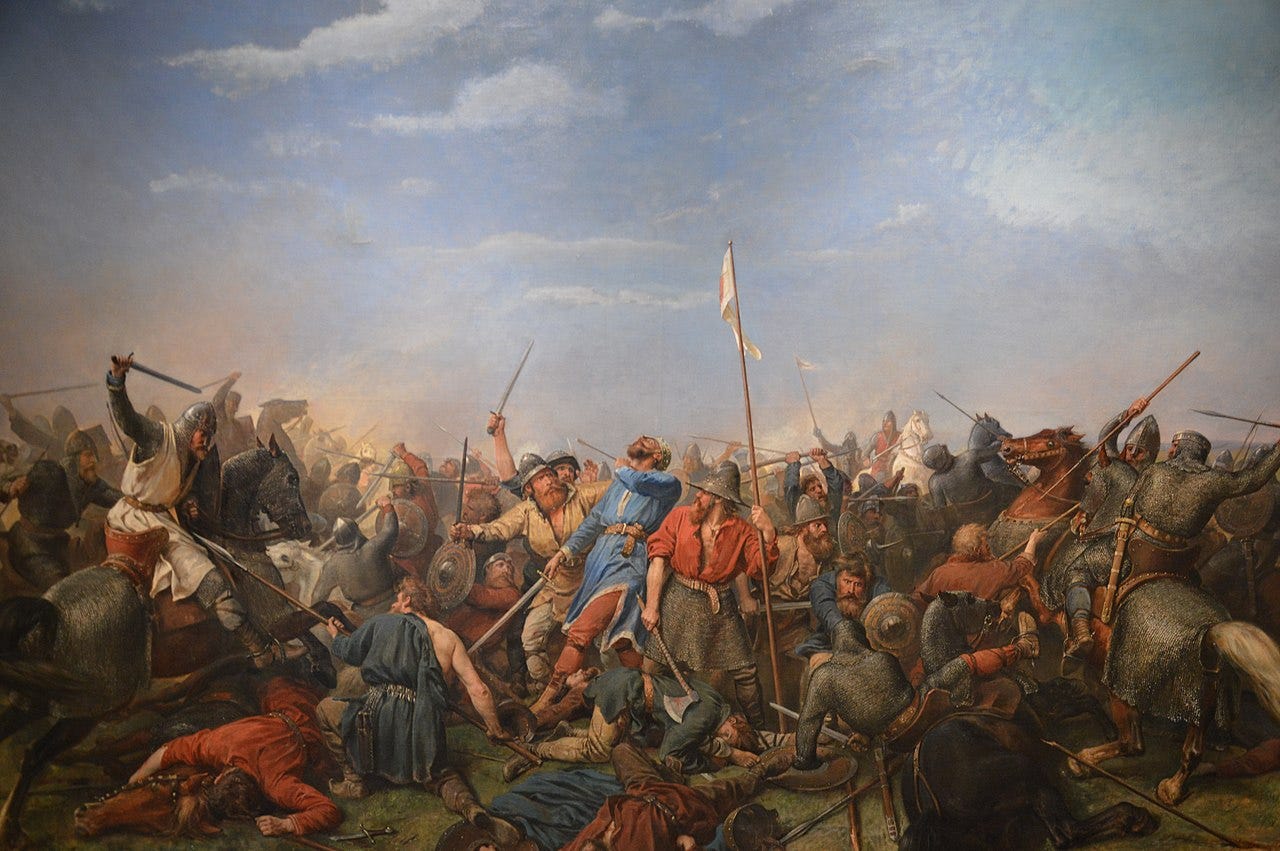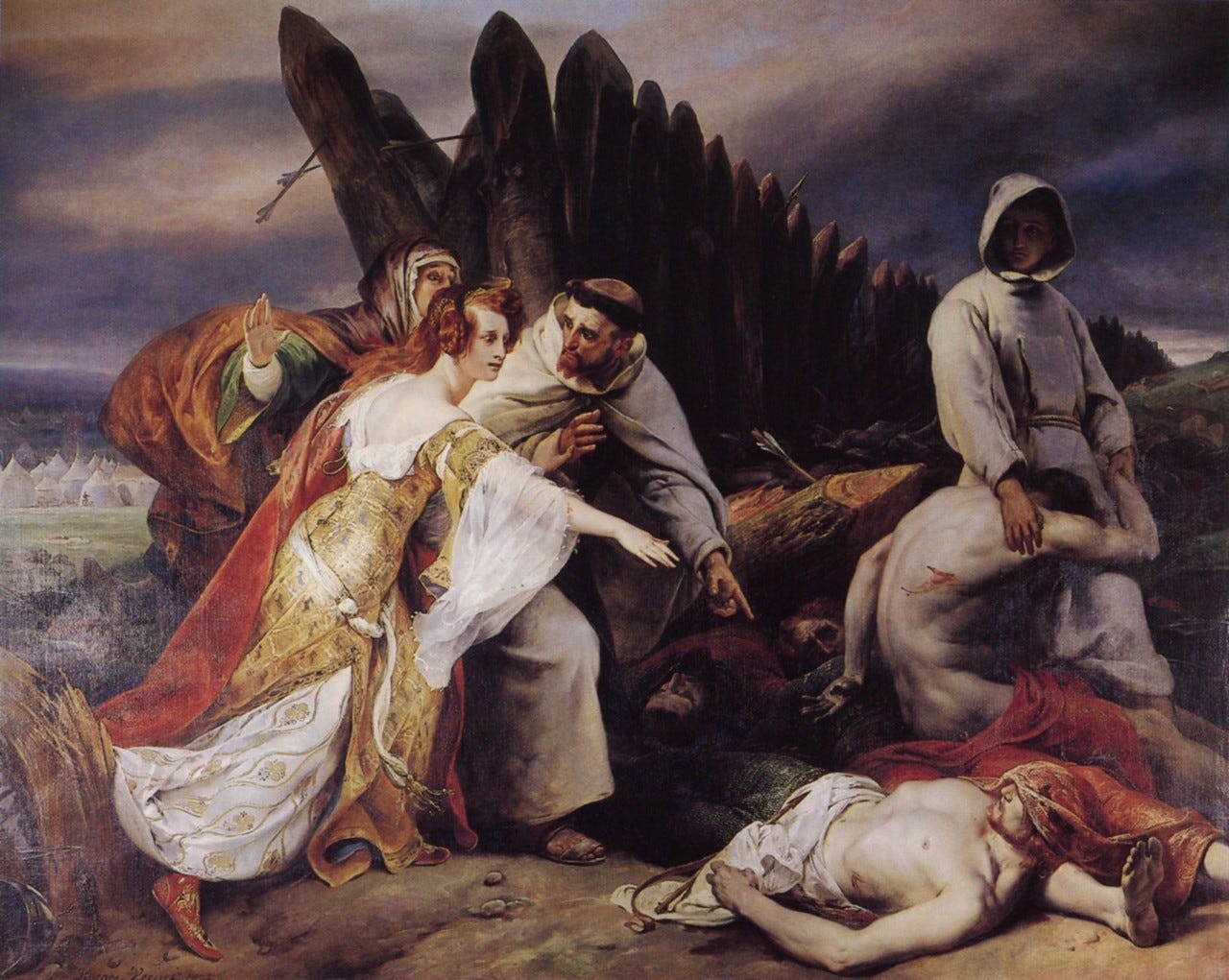How A Battle 957 Years Ago This Month Formed The English Language—And Changed History
From William 'The Bastard' To William 'The Conqueror'
Like much of Europe the France of the ninth and 10th centuries was far from peaceful. Rollo, a powerful Viking leader, tore through the country’s fertile northern region. Those loyal to the king of France were able to best the Vikings in some battles, but couldn’t fully defeat them, so the king granted Rollo his own domain in the north of his lands, so long as the Viking was baptized and swore fealty to the French monarch. Rollo’s territory of Normandy soon became one of France’s most powerful duchies. And though none knew it at the time, Rollo’s conquest would lead to the rise of William the Conqueror–a man whose invasion of England began at Hastings, 957 years ago this October. His descendants occupy the throne of England to this day.
A rare representation of William 'The Conquerer' from the ruins of Normandy's Jumièges Abbey. Xbra/Wikimedia.
Several generations following Rollo’s death, the Normans had assimilated into French culture. William, an eight-year-old illegitimate child of the then-ruler of Normandy and a great-great-great grandson to Rollo, became duke of Normandy upon the unexpected death of his father. Though he held the title, his birth caused him many troubles, and “William The Bastard,” as he was derided, spent much of his early life fighting off his vassals’ attempts to usurp him.
William triumphed in Normandy, but held higher ambitions. He claimed that England’s Anglo-Saxon king, Edward the Confessor, had promised him the throne upon his death. When Edward died, however, his brother-in-law, Harold Godwinson, contested the claim and siezed the throne. Amassing a significant army and fleet, William crossed the English Channel in the autumn of 1066 to answer Harold’s claim with force.
Harold was already busy fighting off an invasion of northern England by the Norwegian king Harald Hardrada, who was attempting to take the crown. When Hardrada’s messenger told Harold him his lord intended to rule all of England, the last Anglo-Saxon king famously said he would “give him just six feet of English soil” to serve as his grave–and quickly fulfilled that promise. Marching to meet the threat, the king destroyed the invading army at Stamford Bridge and killed Hardrada.
The Battle of Stamford Bridge, Peter Nicolai Arbo, 1870. Nordnorsk Kunstmuseum. Illustratedjc/Wikimedia.
Though Harold won an impressive victory in the north, he had to immediately pivot south to meet William’s well-rested forces. By the time they reached Hastings, Harold’s troops were exhausted by both the fighting and the forced marches–and would fight with a significant disadvantage.
The two forces met near the town of Hastings in the south of England on October 14. King Harold knew that his army, composed entirely of infantry, didn’t have the tactical flexibility of the Norman army with its archers and mounted knights, so he fortified his forces on Senlac Hill. Surrounded by forests and swampland, the Anglo-Saxon position was all but impregnable.
The Battle of Hastings, by Philip James de Loutherbourg, engraved by W. Bromley, Bowyer's edition of Hume's History of England, March 1804. Life Photo Archive.
The battle began with Norman archers firing impotently into King Harold’s tightly packed Anglo-Saxon shield wall. A grueling see-saw battle followed, in which the Normans repeatedly charged into King Harold’s lines, were mauled, retreated, and charged uphill again only to receive another beating. As long as the Anglo-Saxons held the line, there was no hope for William.
But the canny Duke of Normandy lured the defenders from their hill by feigning retreat. By the time the Anglo-Saxons giving chase realized William’s retreat was a feint, it was too late: the Norman knights wheeled about and crushed their pursuers on the open plain.
William’s troops crashed back into the now-weakened Anglo-Saxon lines, and King Harold himself was cut down in the fierce battle. Upon seeing their monarch fall, and sapped by the day’s losses, the Anglo-Saxons were routed and cut down by the pursuing Normans.
Edith Swanneck discovers King Harold's corpse on the field. Horace Bernet, 1828. Wikimedia.
Later that year, on Christmas Day, William picked the fruit of his victory and had himself crowned king in Westminster Abbey. Duke William “the Bastard,” beset on every side by rebels, had become King William the First, ruler of one of Europe’s major powers.
William’s accomplishments as king include The Domesday Book, a painstaking census of England that has been described as “Britain’s finest treasure” and “an invaluable source of historical information.” The king also built many castles considered cultural treasures today, including Windsor Castle and the legendary Tower of London. His conquests even inspired the famous and magnificent Bayeux Tapestry, which tells the tale of his victory.
Monument to William the Conqueror at Falaise. Louis Rochet, 1851. Man Vyi/Wikimedia.
Perhaps most consequently, William’s rule had an immense impact on the development of the English language. Though one of England’s most famous kings, he spoke no English when he came to power and he made his native French the language of the court. Over time, the two languages melded, explaining why 30 percent of English words come originally from French.
William’s life is a fascinating story of the twists and turns history can take. The works of Shakespeare, Chaucer, Charles Dickens, and Jane Austen could never have existed, had he lost on the battlefield one October, 957 years ago.









